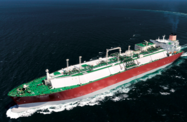Undertaking a large-scale expansion of its chemicals industry, Qatar is aiming to increase the value of hydrocarbons-related exports.
Production of chemicals and petrochemicals will more than double by 2020, reaching 23m tonnes per year (tpy), up from 9.3m tonnes at present, the nation’s minister of energy and industry, Mohamed bin Saleh Al Sada, announced in mid-January.
The rise in capacity is expected to play a central role in diversifying the country’s economy and making it less dependent on gas exports. It will also increase the domestic value added to the country’s petroleum and gas output, with the aim of raising margins and reducing vulnerability to fluctuating hydrocarbons prices.
Al Sada said that Qatar plans to leverage increasing investment in education and research and development (R&D) to support the development of the chemicals industry, a knowledge-intensive sector that relies on applied science. The Qatar Foundation, a government-funded entity, is investing heavily in education and R&D through organisations including the Qatar National Research Fund and Education City.
As well as its growing knowledge and skills base, Qatar can capitalise on a number of competitive advantages in the chemicals sector, most importantly the availability of the world’s third-largest gas reserves, which provide low-cost domestic energy and feedstock, as well as smaller, but significant, crude oil resources.
These have led to the development of the petrochemicals and fertiliser industries in particular. When natural gas is processed, it generally produces around 90% methane and 10% ethane. Methane is used in the production of ammonia and urea fertilisers, while ethane is a feedstock for many petrochemicals.
Other advantages include the country’s location, within reach of developed markets in Europe as well as the emerging countries of Asia and Africa; relatively low-cost labour; and strong infrastructure.
The state can also draw on years of experience and increasing capacity in large existing plants. The chemical industry has thus been a leading light of the Qatar manufacturing sector for some decades, and now the state is building on its world-leading position as part of its diversification drive.
Expansion is already well under way at several companies owned by Industries Qatar, one of the country’s largest companies and the owner of several petrochemicals firms. The first half of this year should see the Qatar Petrochemical Company (QAPCO) open its low-density polyethylene (LDPE) plant at Mesaieed Industrial City. The facility, known as LDPE-3, as it will be the company’s third such unit, will have a capacity of 300,000 tpy. QAPCO’s current LDPE output is more than 400,000 tpy, and with the inauguration of its third production line, it is due to become one of the world’s leading producers of the petroleum-based thermoplastic, which is used in packaging and components.
Meanwhile, Qatar Fertiliser Company (QAFCO) is due to launch its sixth fertiliser production line, Qafco-6, before the end of the year, taking its urea production capacity to 5.6m tonnes from the world’s largest single-site fertiliser plant. QAFCO is already one of the world’s leading fertiliser producers, with a capacity of 4.3m tonnes of urea (giving it an 18% share of the global market for the product) and 3.8m tonnes of ammonia, up 43% and 73%, respectively, since the opening of Qafco-6 in December 2011.
Capitalising on its natural advantages, Qatar has developed a large and thriving chemicals industry since the discovery of its gas reserves. The state’s economic success now allows it to commit even more resources to the sector, both in increasing capacity and expanding R&D to support it. With ample resources as inputs, years of experience and substantial existing infrastructure, the chemicals industry is an obvious focus in the country’s ongoing efforts to diversify and add manufacturing value.

